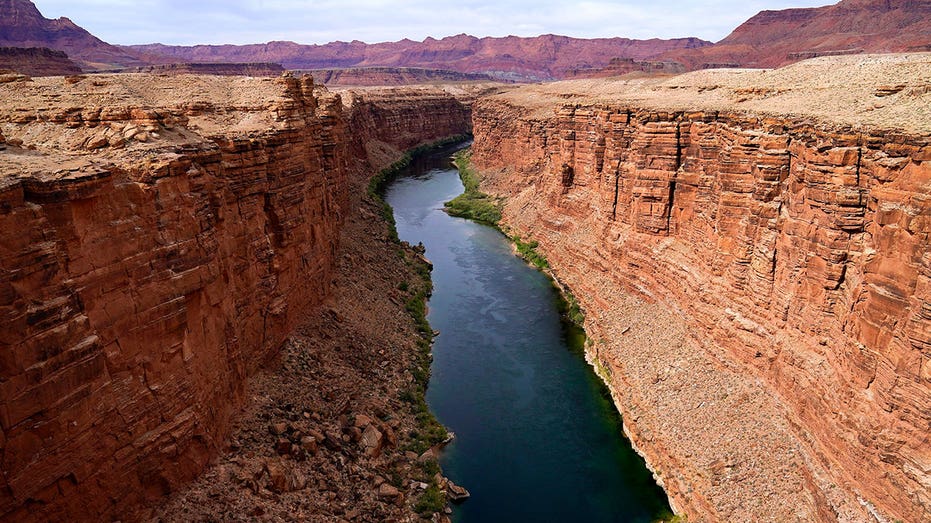The Supreme Court seemed split Monday as it weighed a dispute involving the federal government and the Navajo Nation’s quest for water from the drought-stricken Colorado River.
States that draw water from the river — Arizona, Nevada and Colorado — and water districts in California that are also involved in the case urged the justices to rule against the tribe. Colorado says siding with the Navajo Nation will undermine existing agreements and disrupt the management of the river.
But, arguing on behalf of the Navajo Nation, attorney Shay Dvoretzky told the justices that the tribe’s current water request is modest. The “relief that we are seeking here is an assessment of the nation’s needs and a plan to meet them,” he said.
Arguing on behalf of the Biden administration, attorney Frederick Liu said that if the court were to side with the Navajo Nation, the federal government could face lawsuits from many other tribes.
BIDEN SAYS CLIMATE CHANGE COULD CAUSE COLORADO RIVER TO DRY UP DURING RITZY DNC DINNER: ‘NOT A JOKE’
Four of the court’s justices, including its three liberals, seemed sympathetic to the tribe’s case. But other conservatives including Justice Samuel Alito were skeptical during nearly two hours of arguments at the high court.
Alito asked about “some of the real world impacts” of the decision and suggested he’d seen figures indicating that “per capita water on the Navajo Nation is greatly in excess of per capita water for residents of Arizona.” He pointed out that the Navajo Nation’s original reservation was hundreds of miles away from the section of the Colorado River it now seeks water from.
Justice Brett Kavanaugh also asked about the potential consequences of siding with the Navajo Nation, pointing to a brief that said more water for the tribe would necessarily mean less water for Arizona, striking “at the heart of the social and economic livelihood” of the state “with dire consequences.”
The facts of the case go back to two treaties the tribe and the federal government signed in 1849 and 1868. The second established the reservation as the tribe’s “permanent home” — a promise the Navajo Nation says includes a sufficient supply of water. In 2003 the tribe sued the federal government, arguing that it had failed to consider or protect the Navajo Nation’s water rights to the lower portion of the Colorado River.
A federal trial court initially dismissed the lawsuit, but an appeals court allowed it to go forward.
“Is it possible to have a permanent home, farm and raise animals without water?” Justice Neil Gorsuch asked at one point during arguments, suggesting sympathy for the tribe’s case.
MYSTERIOUS FRESHWATER RESERVOIR FOUND HIDDEN BENEATH THE OCEAN
Justice Sonia Sotomayor, participating in the case via telephone because she wasn’t feeling well, said the government was making the argument that the Navajo Nation can’t do anything to force the government to protect its water rights, something she suggested would have been an “odd agreement” for the tribe to make.
The Colorado River flows along what is now the northwestern border of the tribe’s reservation, which extends into New Mexico, Utah and Arizona. Two of the river’s tributaries, the San Juan River and the Little Colorado River, also pass alongside and through the reservation. Still, a third of the some 175,000 people who live on the reservation, the largest in the country, don’t have running water in their homes.
The federal government says it has helped the tribe secure water from the Colorado River’s tributaries and provided money for infrastructure including pipelines, pumping plants and water treatment facilities. But it says no law or treaty requires the government to assess and address the tribe’s general water needs. The states involved in the case, meanwhile, argue the Navajo Nation is attempting to make an end run around a Supreme Court decree that divvied up water in the Colorado River’s Lower Basin.
A decision in the case is expected by the end of June when the Supreme Court typically breaks for its summer recess.
























